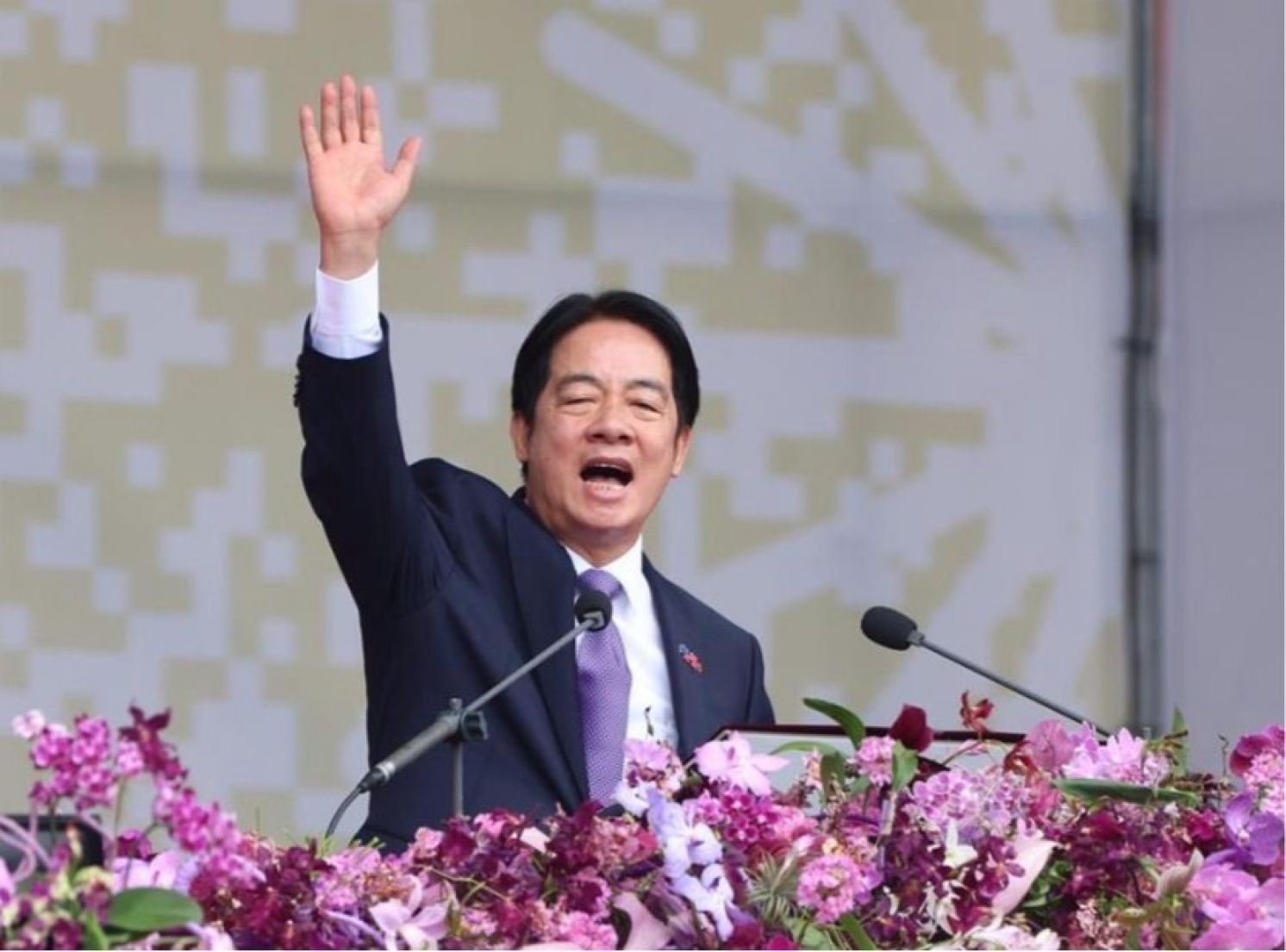
President Lai's National Day Address Seeks Right to R.O.C. Narrative
By Wang Kun-I, China Times Opinion, October 11, 2024
The National Day of the Republic of China (Taiwan) on October 10 passed without major incident, marked by President Lai Ching-te's address, which adhered to the familiar new “Two State theory." Under apparent pressure from the United States, President Lai refrained from provocative statements, achieving a balance that left the United States satisfied, Taiwan stable, and mainland China unalarmed. How President Lai's speech is interpreted is critical for future cross-strait relations.
President Lai began his speech by invoking the R.O.C. name and referencing its establishment 113 years ago following the Xinhai Revolution. While his remembrance of history may not be entirely sincere, it aligns with his earlier remarks about the R.O.C. and People's Republic of China being independent from one another. This strengthens his new “Two State theory.” If President Lai can redefine the narrative surrounding R.O.C. history, it could undermine the legitimacy the Kuomintang (KMT) holds over it.
President Lai’s emphasis on the 113-year age of the R.O.C., rather than continuing the "Republic of China Taiwan" terminology used by former presidents Lee Teng-hui and Tsai Ing-wen, serves to reinforce his claims to its narrative. However, his insistence on mutual independence while neglecting constitutional references and the Act Governing Cross-Strait Relations leaves him vulnerable to criticism regarding the "new two-state theory."
Notably, in his speech, President Lai urged China to respond to rising international tensions and the countless innocent lives lost in conflict, expressing hope that China would work with the global community to end the Russia-Ukraine war and Middle Eastern conflicts. He also called for China to share in international responsibilities, contributing to regional and global peace, security, and prosperity alongside Taiwan.
This appeal to mainland China to assist in ending international wars resonates with the KMT's desire to end cross-strait hostilities. However, President Lai's rejection of the 1992 Consensus and insistence on equal and reciprocal negotiations, along with his refusal to sign a peace agreement, suggests that he aims to internationalize cross-strait peace talks. He seems to seek the involvement of the United States and other third parties to prevent negotiations from devolving into internal politics.
On the other hand, while he emphasized the Republic of China's birthday and mentioned it eight times, President Lai reiterated names including the “Republic of China,” “Taiwan,” and “Republic of China (Taiwan).” This "one Taiwan, three expressions" approach, though previously introduced, seems to aim at appeasing various interests through the concept of "motherland." However, from Beijing’s perspective, this notion translates into "three motherland theories," which inherently contains elements of separatism and is unlikely to be accepted by the mainland.
From Beijing’s perspective, since both sides belong to one nation, there is only one "common motherland," referred to collectively as "China." In his National Day address, President Lai Ching-te reiterated that the two sides are not subordinate to each other, while frequently using the term "China" without adding "mainland," creating the impression of "one China, one Taiwan." This shift from "three motherland theories" to new “Two State theory” and then to "one China, one Taiwan" suggests that Lai is navigating various ideologies to evade American scrutiny. Despite not exceeding previous rhetoric, his fluctuating statements cannot escape Beijing’s classification of his separatism under the "One China" principle.
Although President Lai's speech did not provoke alarm by mainland China, his attempts to appeal to China through discussions of international conflicts, global economic development, and cross-strait peace are unlikely to change the mainland’s view of him as a pragmatic advocate for Taiwan independence. The United States may have advised mainland China to refrain from using President Lai's speech as a pretext for military exercises, but whether the mainland heeds this advice is contingent on its own economic challenges rather than American attitudes. Given that the primary issue for the mainland is its economy, it may allow President Lai some leeway for now, but this tolerance may not last indefinitely.
Instead of continually circling around the "One China" principle, President Lai, having entered the "Republic of China" domain, might be better served by directly accepting the 1992 Consensus and engaging in political negotiations to address the reality of cross-strait division. He could seek to gain the most benefits for Taiwan through dialogue with mainland China, rather than merely seeking advantages through rhetoric, as has been the case since the tenure of President Chen Shui-bian.
After years of verbal conflicts without achieving political gains, if he truly wants to advocate for Taiwan's interests, then President Lai should achieve this by taking mainland China to the negotiation table. Just as Chiang Kai-shek faced Mao Zedong in political negotiations, President Lai need not fear engaging with Chinese President Xi Jinping. If President Lai can confront both KMT and Democratic Progressive Party (DPP) factions in Taiwan, he should also be able to handle negotiations with Communist China. Many Taiwanese citizens are tired of the DPP's tendency to only seek advantages through words. Thus, supporting President Lai in pursuing negotiations with mainland China is likely a common aspiration among the Taiwanese people. He should be more courageous in trying to create a new chapter in cross-strait relations through dialogue.
Photo from: China Times
Article from: https://www.chinatimes.com/opinion/20241011000020-262110?chdtv